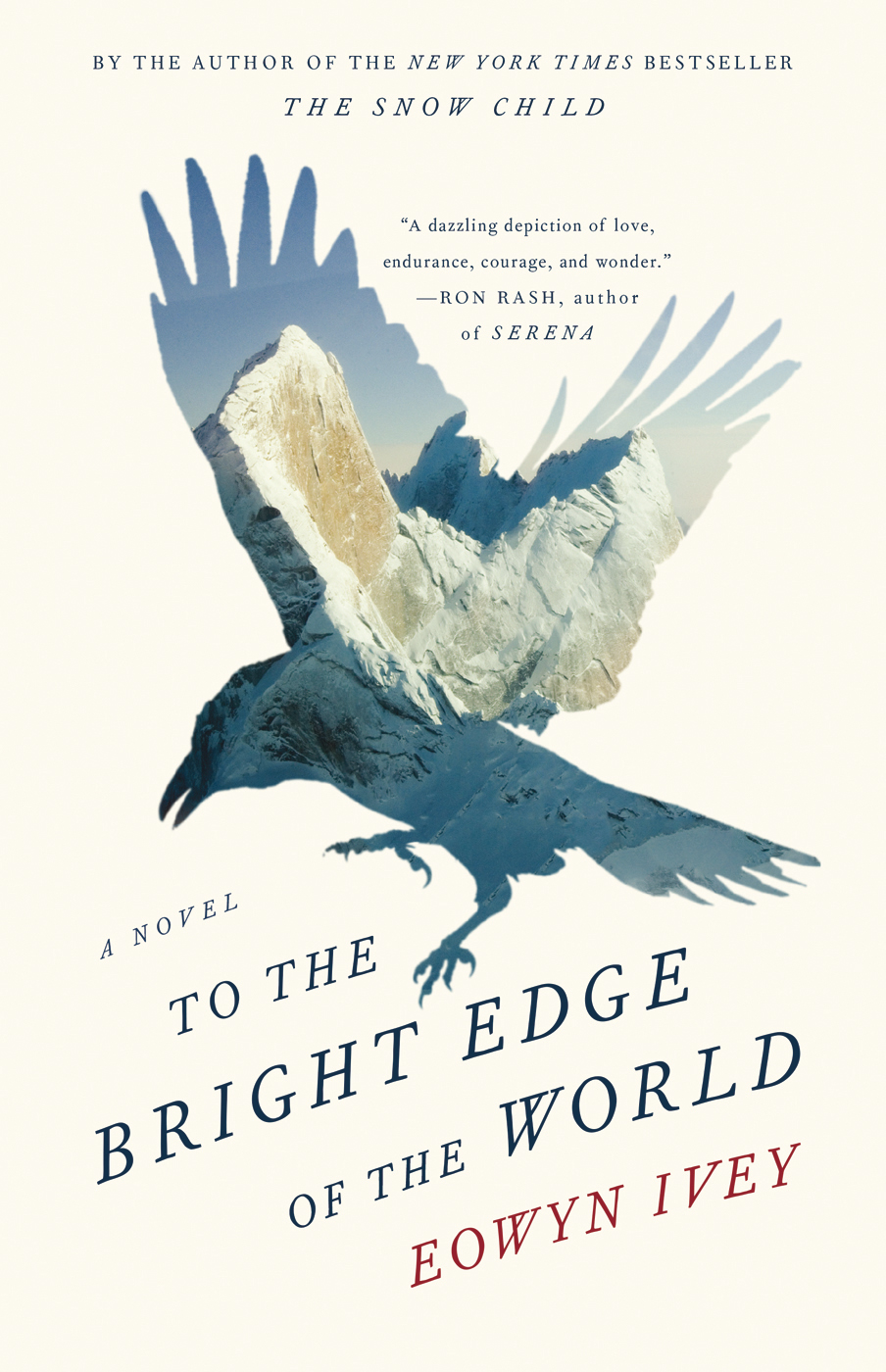
To the Bright Edge of the World
A Novel
کتاب های مرتبط
- اطلاعات
- نقد و بررسی
- دیدگاه کاربران
نقد و بررسی

Starred review from June 13, 2016
An 1885 wilderness expedition, a female pioneer of photography, and Native American myths come to life make Ivey’s second novel (after The Snow Child) an entrancing, occasionally chilling, depiction of turn-of-the-century Alaska. Through diaries, letters, reports, newspaper clippings, drawings, and photographs, Ivey evokes an Indian Wars veteran’s expedition up the Wolverine River into Alaska’s northern interior. Colonel Allen Forrester’s mission is to map the territory, make contact with inhabitants, and collect information for future (military or commercial) enterprises. While his wife, Sophie, remains in Vancouver, Forrester sets off with the intellectually gifted Pruitt and Sergeant Tillman, a rough-and-tumble miner’s son. Others joining the party include a trapper, his partner, a Native American woman who claims to have slit her husband’s throat, and a dog. But the strangest traveling companion, more nemesis than guide, is an old Native American known as the Man Who Flies on Black Wings, who is reputed to be a raven who can take the form of man. Bogged down by the terrain and his own ignorance, loosening ties to civilization if not reality, Pruitt succumbs to memories, and Forrester refuses to shoot wild geese fearing they may be humans in animal form. Sophie, meanwhile, learns to use a camera, building her own darkroom and a hunter’s blind to photograph bird nests in the wild. Years later, a descendant of the Forresters donates their journals and artifacts to a museum in the small town now on the expedition route, site of rafting tours and a million-dollar fishing lodge. In this splendid adventure novel, Ivey captures Alaska’s beauty and brutality, not just preserving history, but keeping it alive. Agent: Jeff Kleinman, Folio Literary.

Starred review from June 1, 2016
A husband and wife explore separate but parallel frontiers in the wild Northwest of the late 1800s.Ivey's superb second novel (The Snow Child, 2012) is mainly composed of two braided journals. One is by Allen, an Army colonel who fought Apaches in Arizona in the 1860s but by 1885 has a gentler temperament and wants to explore the Wolverine River in southern Alaska. The other is by his wife, Sophie, who'd be eager to join him if it weren't for know-your-place lectures from fellow Army wives. Allen and his small band endure a host of familiar travails--scarce food and ammunition, bad weather, skeptical natives. But his secret, unofficial diary also includes more surrealistic experiences, like a discovered newborn baby whose umbilical cord is connected to a tree root. Back at the Army barracks, Sophie discovers she's pregnant but soon miscarries--most likely due to the opium tinctures prescribed by her condescending doctor--and discovers photography as a way to navigate through her grief. Ivey means to say that Allen and Sophie are equally pioneering to the extent that society of the time allowed them to be, but first and foremost this is an exceptionally well-turned adventure tale, rich with Allen's confrontations with brutal snowstorms and murky underwater beasts and Sophie's more interior efforts to learn her craft and elbow local busybodies out of her way. Brief, poetic entries and sketches by a member of Allen's cohort give the story a series of lyrical grace notes, and Ivey anchors the tale in present-day correspondence between Allen's great-nephew and the curator of a museum to whom he's sent Allen's journals. Those letters make an elegant and affecting argument that though the territory is tamer now, not everything that makes it spiritually inspiring has been thawed out and paved over. Heartfelt, rip-snorting storytelling.
COPYRIGHT(2016) Kirkus Reviews, ALL RIGHTS RESERVED.

Starred review from July 1, 2016
Ivey's highly anticipated second novel, following The Snow Child (2012), is again set in the wilds of her native Alaska. She portrays a fictional 1885 expedition, led by Colonel Allen Forrester of the U.S. Army, into the newly acquired Alaska Territory to map the area's rivers and gather information about the Native populations. By means of the colonel's journal entries and letters between him and his wife, Sophie, who remains at the Vancouver barracks, Ivey deftly draws the reader into the perils of the journey. Forrester is accompanied by only two other officers and a few Indian guides they enlist en route; their goal as they embark in February 1885 is to return to Vancouver before the next winter. Forrester describes the challenges he faces, in a late-nineteenth-century style Ivey captures perfectly, including traveling on rivers of ice, dodging huge ice boulders loosened by the spring thaw, re-routing around narrow canyons, and suffering near-starvation and gut-wrenching illnesses. Sophie is a strong character as well; a feminist who chafes at the social restrictions of the barracks, she teaches herself photography in her husband's absence. Ivey presents a compelling historical saga of survival.(Reprinted with permission of Booklist, copyright 2016, American Library Association.)

March 1, 2016
As evidenced by her New York Times best seller, The Snow Child, also a Pulitzer Prize finalist, Ivey writes with an arresting blend of near-mythic sensibility and gorgeous, soaring exactitude that she should put to good use in this second novel. In the chill of an 1885 Alaska winter, Lt. Col. Allen Forrester launches an expedition up the unforgiving Wolverine River, intent on assessing the country's newly acquired territory and indigenous peoples. He's desperate to get the job done and return to his pregnant wife, but the Alaskan wilds aren't called wild for nothing. With a 100,000-copy first printing.
Copyright 2016 Library Journal, LLC Used with permission.

























دیدگاه کاربران